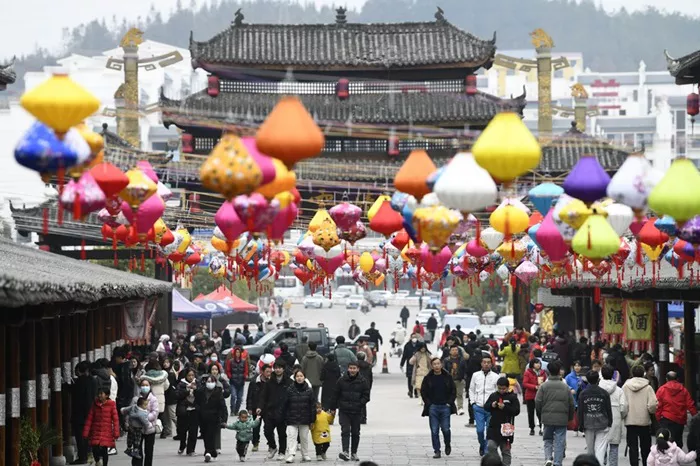The 2025 Spring Festival in China promises to be an exceptional public holiday, both in length and significance. Marking the first festival since the government extended the holiday to eight days and the first since the event was added to the UNESCO Representative List of the Intangible Cultural Heritage of Humanity in December 2024, this year’s holiday will offer more than just traditional family reunions.
Starting on January 28, the extended holiday—following a State Council decision in November 2024—officially includes the eve of the Chinese New Year, giving people more time to travel and engage with traditional Chinese culture, which has gained renewed momentum.
Travel Trends: Longer, More Immersive Trips
With the longer holiday, more Chinese citizens are opting for extended travel. According to a joint report from the China Association of Travel Services and the online agency Tuniu, the average trip duration during this year’s Spring Festival is expected to be 4.8 days, up from 4.3 days in 2019, before the pandemic.
Outbound travel has seen an even more significant surge. UTour Group Co. reports a 30% increase in tourist groups compared to last year, with outbound tourist numbers up by 46%. There has been a massive increase in travel to long-haul destinations, with bookings to Australia and New Zealand up 220%, trips to the UAE rising by 200%, and significant jumps in travel to southern and northern Europe.
Domestic travel is also thriving, with smaller, less-known destinations like Nujiang and Chongzuo in the southwest and Zhongwei in the northwest growing in popularity. Big cities like Beijing and Shanghai remain top choices for holidaygoers, but off-the-beaten-path locations are also attracting attention.
Furthermore, car rentals for the 2025 Spring Festival are expected to increase by 240% compared to 2019, reflecting a shift toward deeper, more immersive tourism experiences.
Cultural Revival and Intangible Heritage
The Spring Festival’s inscription on UNESCO’s Intangible Cultural Heritage list has sparked increased interest in Chinese cultural traditions. A report from Fliggy noted that the search volume for “intangible cultural heritage travel” surged by 133% in early January, compared to December.
Local governments have embraced this growing interest by promoting cultural tourism. In Harbin, a special train to Mohe featured demonstrations of traditional ethnic crafts like birch-bark painting, dough sculpture, and embroidery by the Oroqen people, known for their ancient hunting culture. In Langzhong, Sichuan, events celebrating local traditions have highlighted intangible heritage, enriching the festive atmosphere.
Zhang Zhiping, head of a local cultural research society, emphasized the importance of using the UNESCO designation to enhance the cultural vibrancy of the Spring Festival and promote tourism. Zhou Qingjie, a professor at Beijing Technology and Business University, noted that this focus on traditional culture would help boost both the holiday consumer market and cultural tourism.
As the Spring Festival approaches, the combination of extended holidays, cultural pride, and a thirst for travel and new experiences sets the stage for a unique and meaningful celebration across China.

